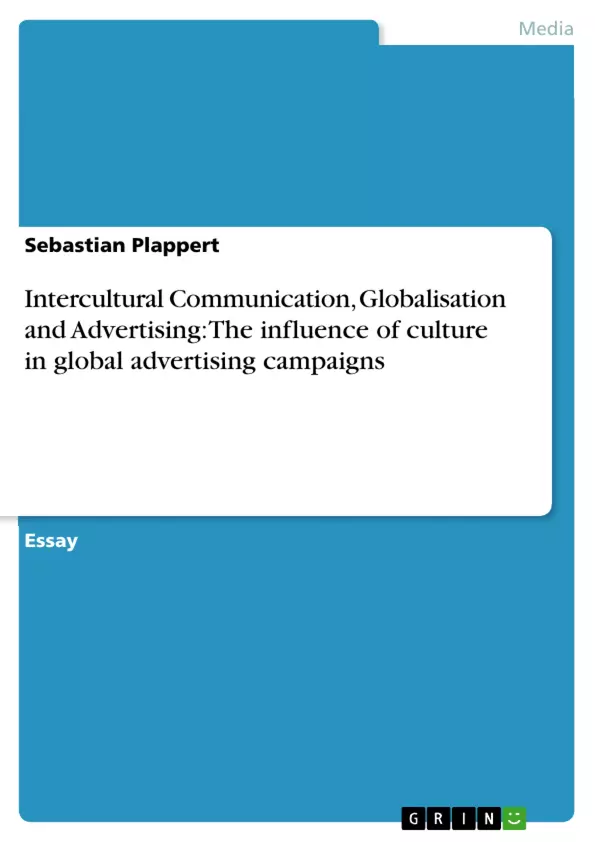This paper argues that advertising standardisation is only possible when cultures overlap. For this reason, the term of culture has to be captured and defined, before globalisation and its effect on advertising is considered. Then, the paper will investigate how advertising communicates across cultures and point out chances and flaws of Hall’s and especially Hofstede’s approach. By reviewing localised and standardised advertising, finally, a hybrid advertising strategy will be suggested.
Inhaltsverzeichnis (Table of Contents)
- Intercultural Communication, Globalisation and Advertising
- Culture and Communication
- The Concept of Culture
- The Impact of Globalization
- Intercultural Communication in Advertising
- The Challenge of Intercultural Communication
- The Impact of Globalisation
- The Role of Values and Stereotypes
- Target Group and Media Choice
- Hall's Concept of High and Low Context Communication
- Hofstede's Cultural Dimensions
- Critique of Hofstede's Model
- Local vs. Global Advertising
Zielsetzung und Themenschwerpunkte (Objectives and Key Themes)
This paper examines the influence of culture on communication in the field of advertising. It argues that a focus on cultural differences is crucial for developing effective global advertising campaigns. The paper explores how culture shapes communication and considers the impact of globalization on advertising practices.
- The concept of culture and its influence on communication
- The impact of globalization on advertising and consumer behavior
- The role of cultural values and stereotypes in advertising
- The effectiveness of localized versus standardized advertising strategies
- The application of cultural models like Hall's and Hofstede's dimensions
Zusammenfassung der Kapitel (Chapter Summaries)
- This section examines the concept of culture and its impact on communication. It defines culture as a learned set of shared interpretations about beliefs, values, norms, and social practices that influence the behavior of a relatively large group of people. It discusses how cultural differences can lead to miscommunication, emphasizing the importance of cultural sensitivity in intercultural communication.
- This section delves into the influence of globalization on advertising. It analyzes how globalization has created a global marketplace, leading to increased standardization of advertising practices. However, it also emphasizes the ongoing importance of cultural differences, arguing that global advertising campaigns need to consider local cultural nuances.
- This section investigates the role of values and stereotypes in advertising. It highlights how advertising often leverages cultural values and stereotypes to create messages that resonate with target audiences. It discusses the importance of understanding cultural differences and avoiding harmful or offensive stereotypes in advertising campaigns.
- This section examines the strengths and limitations of Hall's and Hofstede's models for understanding cultural differences. It explores how these models can inform the development of culturally appropriate advertising strategies. It highlights the potential pitfalls of standardized advertising and the importance of a localized approach.
Schlüsselwörter (Keywords)
This paper focuses on intercultural communication, globalization, advertising, cultural values, stereotypes, Hall's model of high and low context communication, Hofstede's cultural dimensions, localized and standardized advertising strategies.
- Quote paper
- MIR, MA Sebastian Plappert (Author), 2007, Intercultural Communication, Globalisation and Advertising: The influence of culture in global advertising campaigns, Munich, GRIN Verlag, https://www.grin.com/document/153938



